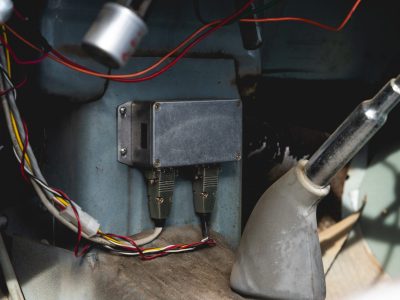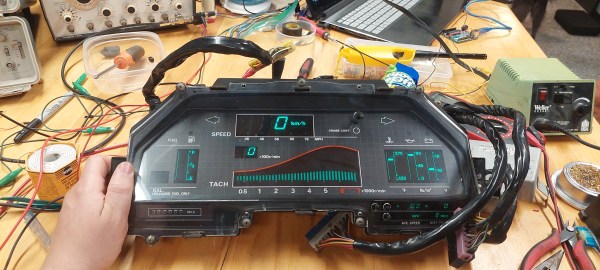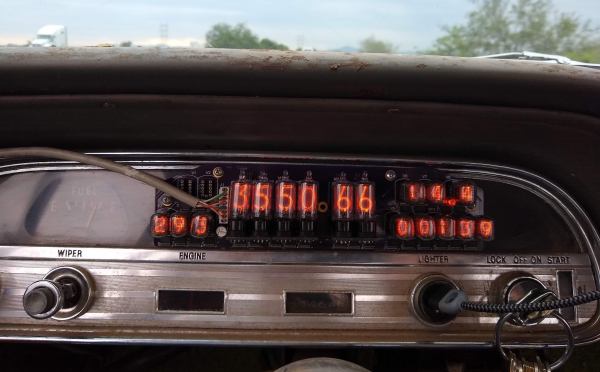There’s no accounting for taste, but it’s hard to argue with The Autopian when they declare that this Nixie tube dash by [David Forbes] is “the coolest speedometer of all time” — well, except to quibble that it’s also the coolest tachometer, temperature gauge, oil pressure indicator, and voltmeter. Yeah, the whole instrument cluster is on [David]’s Volvo PV544 is nixified, and we’re here for it.
He’s using a mixture of tubes here– the big ones in the middle are the speedo and tachometer, while the ovals on either side handle the rest. There’s a microcontroller on the front of the firewall that acts a bit like a modern engine control unit (ECU) — at least for the gauges; it sounds like the Volvo’s engine is stock, and that means carbureted for a car of that vintage.
The idea that this hack could have been done back in the 50s when the car was new just tickles us pink. Though you’d have probably needed enough valves to fill up the boot, as our British friends would say. Translate that to “enough vacuum tubes to fill the trunk” if you’re in one of the rebellious colonies.
We’ve featured [David]’s projects previously, in the form of his wearable video coat. But his best known work is arguably the Nixie Watch, famously the timepiece of choice for Steve Wozniak.
Thanks to [JohnU] for the tip!
All images by Griffin Riley via The Autopian














